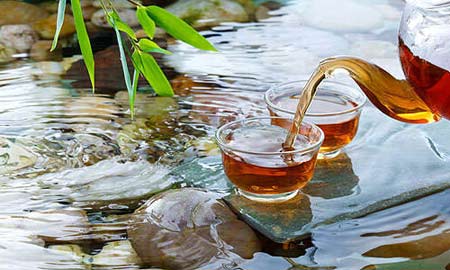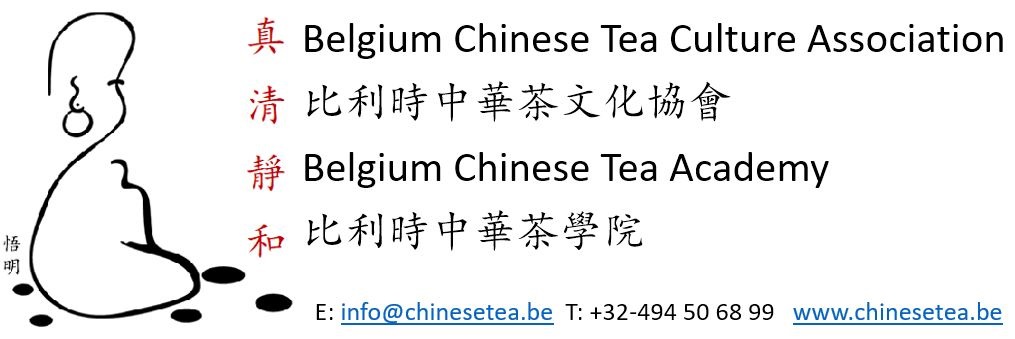Water as Mother to Tea; Teaware as Father to Tea
Nearly 25 years ago, I met a good friend of mine in Taipei, Olga, who then just returned from Hangzhou and bought back some Xihu Long Jing. When we had a cup of tea in the tea room, she complained the flavors and tastes of Long Jing she bought were not same as the one she drank in Hangzhou, she thought she has been cheated by the tea shop. I explained to her, the chance she was cheated is small, especially when she bought it on spot where it was freshly made. I briefly explained the reason she felt differently was because of Water.

Water used for tea brewing does influence the color, flavors and taste of tea greatly. The first factors we should check are pH and TDS,
- First of all, the pH and hardness of water from the water source in Taipei is different from Hangzhou
- The average pH of our body is between 7.35 – 7.45, therefore the most suitable pH of tea liquor should be as close as to the pH level as in our body.
- When the pH is lower than 7.0 : Basically the water is more towards to acidic instead of base. Even though the flavor of tea is fine and soft and the color is brighter, but the taste tends to be more flat and weak
- When the pH is between 7.0 – 7.5 : The tea flavors are more full, the color is more brilliant, the tea liquor is more fine and soft; more able to bring out a good balance in flavors, color and tastes
- When the pH is between 7.5 – 8.0 : It would weaken the flavor notes, the texture of water is more rough that darken the color of tea liquor. Even though it could present in more full body in taste but sometimes could increase the risk of imbalance in taste.
- When the pH is higher than 8.0 : The taste of tea is more flat, dull and tasteless; and darken the color of tea liquor.
- Besides checking the pH, we should also consider the influence from TDS (Tax Deducted at Source) value. TDS values represents the amount of dissolved impurities in water (ppm) , which indicates how many milligrams of total dissolved solids are dissolved in 1 liter of water (mg/l). Normally you can find such index on the water bottle package. The content of dissolves, such as Calcium, Magnesium, Ions, Colloids, Proteins, colloids could make a significant influence to the color, flavors and taste of tea as well.
- the larger TDS value, the greater the impurity content in the water and vice versa. The value should be suitable for human body’s absorption, suggest to avoid either too high or too low.
- The WHO suggests less than 50mg/l. But the standard is varied in different countries, i.e. 0-50mg/l in the US standards, 0-70mg/l in the EU standards. Basically speaking 100 or less can be accepted.
- Some water filter system can reduce the TDS to Zero while maintain the neutral pH values, even though the taste of astringency is less, the color of tea liquor is brighter, however, it also weakens the fullness in flavors and tastes that we expect from certain teas.
The above data can give us a guideline when choose mineral water, but still is not the absolute factor. Years ago in a tea event which was sponsored by a very well-known mineral water company. The pH is <6.0 and the TDS is also very low. When I used that water to brew Taiwan Gaoshan Oolong in the first evening, even though the color was nice (bright and transparent), but the flavors and taste of my Taiwan Oolong were flat, dull and tasteless. So quickly I changed the water for the next day by mixing that expensive mineral water with the tap water from Brussels, then my Oolong was alive and tasty. Recently I tasted the natural untreated mineral water from Iceland, Lifjalla, the pH is between 8.2-8.5 and the TDS 9.4mg/l. The natural taste of that water is sweet, and it matches perfectly well with traditional Oolong, black tea, dark tea and Pu’erh with the representation of full body in flavors and taste, and the color is brilliant and transparent.
Therefore selecting the right water is important for tea. However, there are other factors could also influence the flavors and tastes of tea, i.e.
- The conditions of water pipeline would make a great difference to the quality of water from the tap.
- The temperature and humidity in the tasting room would also influence the flavors and tastes, suggested room temperature between 15-27°C and humidity around 70%.
- Even the light, the quality of air, air flow, colors in the tea tasting room should take into consideration.
Making a cup of tea is easy, but there are many fundamental factors could influence the flavors and taste of the tea that you would like to enjoy. Small details require great attention.


Leave a Reply
You must be logged in to post a comment.